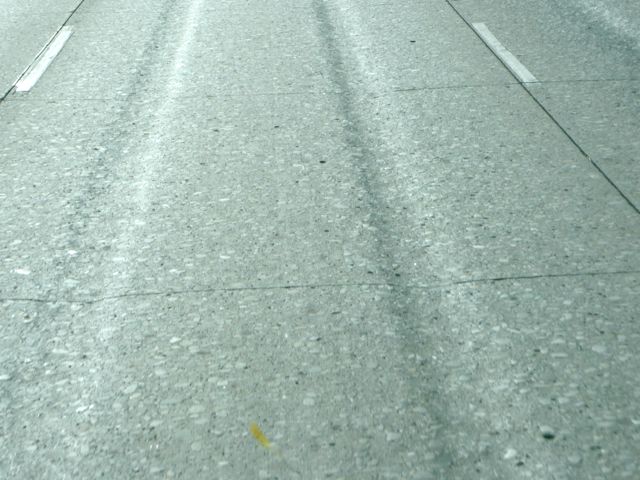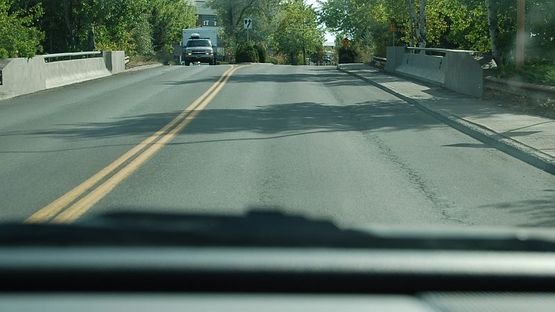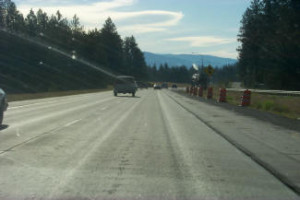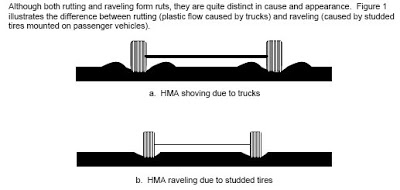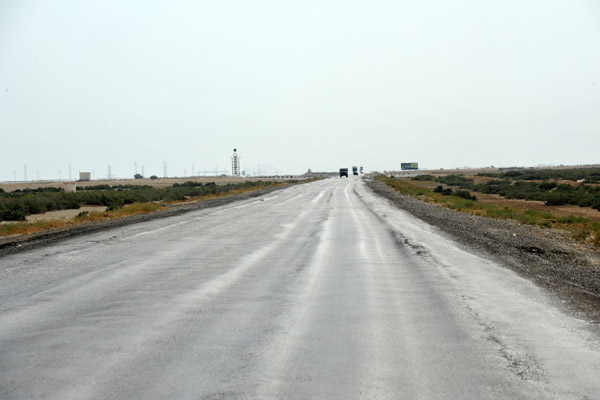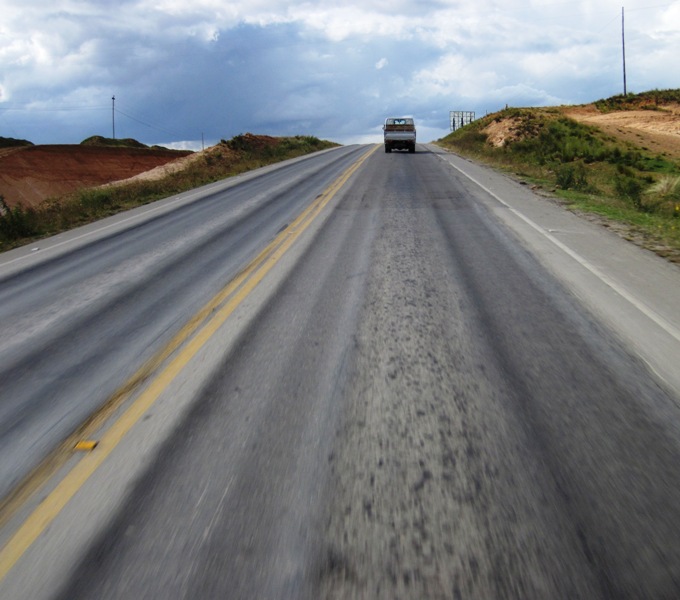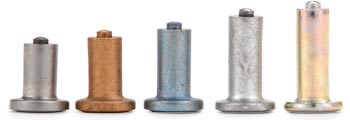Studded tires dramatically increase road surface wear relative to studless tires. So why are they allowed, and why would anyone promote their usage?
In regions with high traffic density and long road life, studded tires can gradually chip away the road surface and cause serious ruts, as seen in such places as Oregon and Idaho:
Do those narrow ruts look familiar? Probably not, if you live in the Canadian prairies. Our road damage is caused by two major factors: heavy trucks and freeze-thaw cycles. The extreme weight of heavy commercial trucks actually causes plastic deformation of the asphalt surface rather than simply removing material.
As a result, our ruts typically resemble these:
Of course, most of our roads never last long enough to have significant ruts at all. They tend to disintegrate into a moon-like landscape as the result of spring freeze-thaw cycles and the constant beating of heavy vehicle tires before they can survive long enough for surface wear to be a major factor.
None of this damage is caused by passenger vehicles in any significant way. According to AASHTO, the American Association of State Highway and Transportation Officials, an 80,000 lb semi-truck contributes as much road damage in a single pass as about 10,000 passenger vehicles. The U.S. General Accounting Office (GAO) found that the amount of damage each axle incurs is proportional to the fourth power of the weight difference, so it gets even worse if the loads are not distributed among so many axles. A fully loaded city bus, with only two axles to carry up to 44,000 lb, are exempt from normal axle load limits and cause similar levels of damage as fully loaded semi trucks. With a single pass of a fully loaded city bus being equivalent to that of over 10,000 cars, city buses are the major contributor of road damage on most city roads that fall on transit routes. These are roads that are often not even designed to handle the heavy loading of large trucks.
Studded tires on passenger vehicles don’t appear to be causing our Saskatchewan roadways any problems yet. If studded tire usage ever increases to the point that it does, there are many changes that could be implemented to improve the situation.
The first is to adopt European standards for stud design. Due to more progressive studded tire laws, European studs are designed to reduce road wear compared to the steel-bodied TSMI studs that are often installed by North American tire shops and distributors. Not only do TSMI studs cause unnecessary levels of road damage, their performance is inferior and they are often poorly installed, with some studs inserted too deep where they are ineffective, and others inserted too shallow where they impact the road harshly and break off early in the tire’s life. Modern European studs are superior in every way and are installed properly by machinery at the factory. Currently, only Northern Ontario requires lightweight European studs. Studs are banned in Southern Ontario except for short-term visitors.
TSMI studs:
Modern European studs:
The second is to limit studded tires to seasonal usage. Currently, studded tires are permitted year-round on Saskatchewan roads. Alberta and the Territories are the only others to allow year-round usage.
Finally, more severe restrictions may need to be imposed. Since heavy vehicles cause a disproportionate amount of road damage, it may make sense to have weight limits for studded tire usage. Quebec is the only province with weight restrictions. There, commercial vehicles over 3000 kg must use studless tires. Another possible restriction is a speed restriction. The damage from studded tires increases with speed. Studded tire users should drive at moderate speeds if they want to reduce highway/freeway road wear and prolong tire life.
If road wear due to studded tires cannot be mitigated, then the costs should be borne entirely by the users. An annual fee could be paid by studded tire users. The fee could be proportional to the amount of damage the vehicle causes, so light cars would pay very little and heavier vehicles would be held fully accountable for their effects. This may even be a better option than limiting the weight of vehicles equipped with studded tires. Some of the costs could be offset by discounts in insurance if studded tire users are found to have lower collision rates, as they do in Scandinavian countries. They could also receive a discount for not needing to contribute to the costs of salting and sanding roads. The city of Saskatoon currently spends almost $2 million a year to apply a salt/sand mixture to roads. Studded tire users do not require salt or sand in any conditions, and an abundance of studded tires would quickly scuff and pit any smooth ice so that even studless tire users could drive more safely before any spreaders have a chance to get out.
We’re a long way from having to worry about these possible solutions, with the minimal number of Saskatchewan drivers currently taking advantage of studded tires. If we ever begin to approach the usage rates of Scandinavian countries, where over 50% of drivers use studded tires, some changes may be required. But the best changes will be the reduction in vehicular incidents and, hopefully, the end of salting and sanding on most city roads. Imagine how much nicer the city would look covered with white snow instead of brown. Imagine spring without all that dust blowing around. Imagine having a vehicle that doesn’t rust. What sort of annual fee would drivers pay for these luxuries, along with consistent and predictable traction in all possible winter conditions, if they knew it were possible? Studded tires damage the roads, but it’s worth it.
